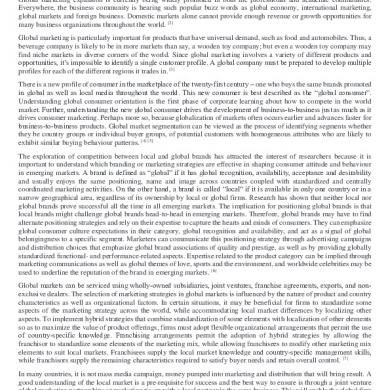Seminar Presentation On Pickering Emulsions And It’s Applications
This document was uploaded by user and they confirmed that they have the permission to share it. If you are author or own the copyright of this book, please report to us by using this DMCA report form. Report DMCA
Overview
Download & View Seminar Presentation On Pickering Emulsions And It’s Applications as PDF for free.
More details
- Words: 644
- Pages: 11
Loading documents preview...
Seminar Presentation On Pickering Emulsions And It’s Applications
Guided By, Dr. Bina Sengupta
Prepared By, Krunal H. Parmar BE-4 Chemical Roll No : 810
The Maharaja Sayajiro University of Baroda Faculty of Technology and Engineering
What is Pickering Emulsion
Emulsion :- Emulsion stabilized by surfactants
Pickering Emulsion :- Emulsion stabilized by solid particles
Irreversible adsorption of solid colloidal particles at the oil-water interface
More stable against coalescence than conventional emulsions.
Named after S.U. Pickering, who described the phenomenon in 1907, the effect was first recognized by Walter Ramsden in 1903.
Solid particles bind to the surface of the interface and prevent the droplets from coalescing, making the emulsion more stable.
Homogenised milk is an example of a Pickering-stabilized emulsion. Casein (protein) units are adsorbed at the surface of milk fat globules and act as a surfactant.
Solid particles are 10-fold smaller in size than dispersed droplets of the emulsion.
To Ngai, Stefan A F. Bon. Particle-stabilized Emulsions and Colloids : Formation and Applications. Royal Society of Chemistry, 2015
Examples of Pickering Particles Fumed silica
O/W or W/O
Fe3O4 Nanoparticles O/W Titanium Oxide W/O Graphene Oxide O/W Carbon Black W/O Cellulose Nanocrystals O/W Starch Nanocrystals O/W Methacrylate Nanoparticles O/W Alumina W/O Fat Crystals W/O
Factors affecting the Stability of Pickering Emulsion
1.
Wettability (Contact angle)
2.
Particle size
3.
Solid Concentration
4.
Interparticulate interaction
Wettability The morphology of pickering emulsion depends on contact angle of particle at liquid-liquid interface. The particle’s contact angle to the surface of the droplet is a characteristic of the hydrophobicity. Contact angle cos θ = σL / F Where, σ = Surface tension, L = Length of plate, F = Resulting Force Contact angle is <90O, emulsion is hydrophilic and will be O/W type. Contact angle is >90O, emulsion is hydrophobic and will be W/O type. Contact angle is =90O, emulsion is 50% hydrophilic & 50% hydrophobic. Particles that are partially hydrophobic (i.e. contact angle = 90°) are better stabilizers because they are partially wettable by both liquids and therefore bind better to the surface of the droplets.
The stabilization energy is given by :
Where, = Interfacial Tension = Contact angle
Protection against coalescence is based on the energy to expel the particles from the interface into the dispersed droplets. This energy depends on the contact angle, which ideally should be 90 O. Energy require to desorb particles in pickering emulsion higher than conventional emulsion by surfactants.
Tang, Juntao; Quinlan, Patrick James; Tam, Kam Chiu. Stimuli-responsive Pickering Emulsions; Recent advances and potential applications. Soft Matter. 2015; 3512-3529
Particle Size Particle size of pickering particles : Between 100 nm to 5 µm Particle size of surfactants : 0.4-1 mm Larger the particles, slower the kinetics of adsorption, means larger energy required to the particle to adsorb at the interface. Emulsification time is larger compared to surfactant emulsion.
Concentration of Particle Stability can be increased by increasing particle concentration
Advantages
Better stability than conventional emulsion by surfactants.
Pickering particles can be recovered easily from an emulsion.
Reduce foaming problems.
Have lower toxicity, so can be used in food industry.
Edible
Degradable
Biocompatible
Environmental friendly
Ease of Synthesis
Can be easily inverted from W/O to O/W by simply increasing the volume fraction of water.
Applications
Used in Biomedical and health fields where use of surfactant is undesirable.
Agrochemicals and food manufacturing industries.
Enhance oil recovery.
Waste water treatment.
Used in semipermeable capsules for drug delivery.
Catalyst recycling
Cosmetics and personal care products like skin moisturizers, sunscreen lotion, whitening products, anti-aging products, deodorants and hair care products.
Pickering emulsion polymerization.
Solid Particle Stabilization of Emulsions- Characterization, Processing Methods and Applications https://www.azonano.com.amp/article.aspx%3fArticleID=1293
Thank You
Guided By, Dr. Bina Sengupta
Prepared By, Krunal H. Parmar BE-4 Chemical Roll No : 810
The Maharaja Sayajiro University of Baroda Faculty of Technology and Engineering
What is Pickering Emulsion
Emulsion :- Emulsion stabilized by surfactants
Pickering Emulsion :- Emulsion stabilized by solid particles
Irreversible adsorption of solid colloidal particles at the oil-water interface
More stable against coalescence than conventional emulsions.
Named after S.U. Pickering, who described the phenomenon in 1907, the effect was first recognized by Walter Ramsden in 1903.
Solid particles bind to the surface of the interface and prevent the droplets from coalescing, making the emulsion more stable.
Homogenised milk is an example of a Pickering-stabilized emulsion. Casein (protein) units are adsorbed at the surface of milk fat globules and act as a surfactant.
Solid particles are 10-fold smaller in size than dispersed droplets of the emulsion.
To Ngai, Stefan A F. Bon. Particle-stabilized Emulsions and Colloids : Formation and Applications. Royal Society of Chemistry, 2015
Examples of Pickering Particles Fumed silica
O/W or W/O
Fe3O4 Nanoparticles O/W Titanium Oxide W/O Graphene Oxide O/W Carbon Black W/O Cellulose Nanocrystals O/W Starch Nanocrystals O/W Methacrylate Nanoparticles O/W Alumina W/O Fat Crystals W/O
Factors affecting the Stability of Pickering Emulsion
1.
Wettability (Contact angle)
2.
Particle size
3.
Solid Concentration
4.
Interparticulate interaction
Wettability The morphology of pickering emulsion depends on contact angle of particle at liquid-liquid interface. The particle’s contact angle to the surface of the droplet is a characteristic of the hydrophobicity. Contact angle cos θ = σL / F Where, σ = Surface tension, L = Length of plate, F = Resulting Force Contact angle is <90O, emulsion is hydrophilic and will be O/W type. Contact angle is >90O, emulsion is hydrophobic and will be W/O type. Contact angle is =90O, emulsion is 50% hydrophilic & 50% hydrophobic. Particles that are partially hydrophobic (i.e. contact angle = 90°) are better stabilizers because they are partially wettable by both liquids and therefore bind better to the surface of the droplets.
The stabilization energy is given by :
Where, = Interfacial Tension = Contact angle
Protection against coalescence is based on the energy to expel the particles from the interface into the dispersed droplets. This energy depends on the contact angle, which ideally should be 90 O. Energy require to desorb particles in pickering emulsion higher than conventional emulsion by surfactants.
Tang, Juntao; Quinlan, Patrick James; Tam, Kam Chiu. Stimuli-responsive Pickering Emulsions; Recent advances and potential applications. Soft Matter. 2015; 3512-3529
Particle Size Particle size of pickering particles : Between 100 nm to 5 µm Particle size of surfactants : 0.4-1 mm Larger the particles, slower the kinetics of adsorption, means larger energy required to the particle to adsorb at the interface. Emulsification time is larger compared to surfactant emulsion.
Concentration of Particle Stability can be increased by increasing particle concentration
Advantages
Better stability than conventional emulsion by surfactants.
Pickering particles can be recovered easily from an emulsion.
Reduce foaming problems.
Have lower toxicity, so can be used in food industry.
Edible
Degradable
Biocompatible
Environmental friendly
Ease of Synthesis
Can be easily inverted from W/O to O/W by simply increasing the volume fraction of water.
Applications
Used in Biomedical and health fields where use of surfactant is undesirable.
Agrochemicals and food manufacturing industries.
Enhance oil recovery.
Waste water treatment.
Used in semipermeable capsules for drug delivery.
Catalyst recycling
Cosmetics and personal care products like skin moisturizers, sunscreen lotion, whitening products, anti-aging products, deodorants and hair care products.
Pickering emulsion polymerization.
Solid Particle Stabilization of Emulsions- Characterization, Processing Methods and Applications https://www.azonano.com.amp/article.aspx%3fArticleID=1293
Thank You
Related Documents

Thermodynamics And Its Applications
January 2021 1
Classroom Presentation On Fracture
January 2021 1
Presentation On Abb Gcb
February 2021 1
Iec 61850 And Applications
February 2021 1
Wto And Its Agreement
January 2021 1
My Presentation On Android History
February 2021 1More Documents from "Vineet Sharma"

_list Chemical Industry
February 2021 1
Mayur Saab.xlsx
January 2021 1
Global Marketing
January 2021 1
Wi July2012
January 2021 0
